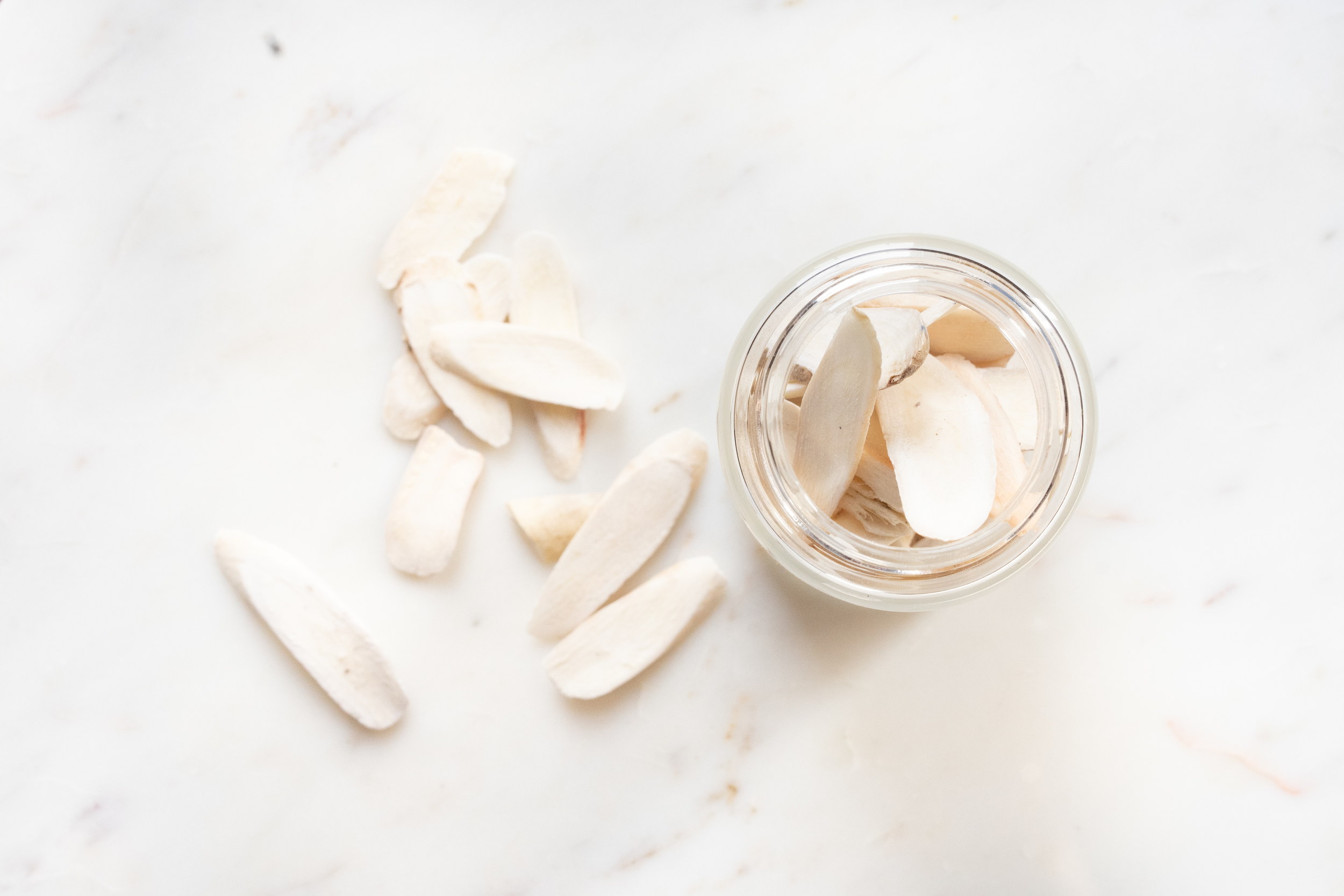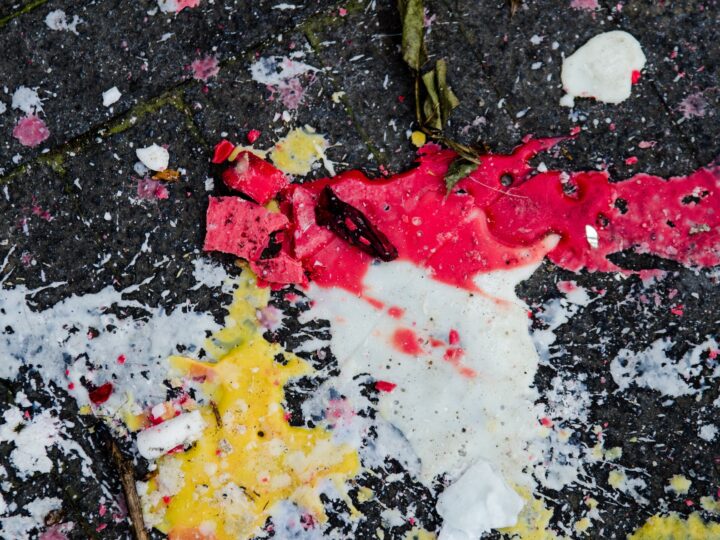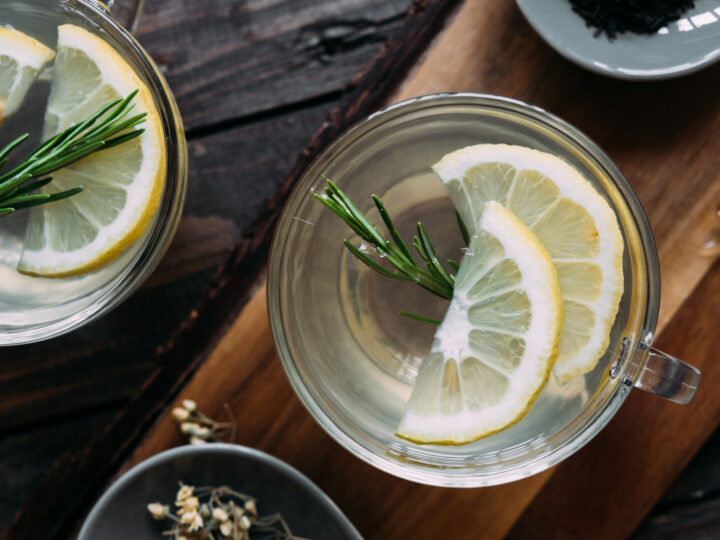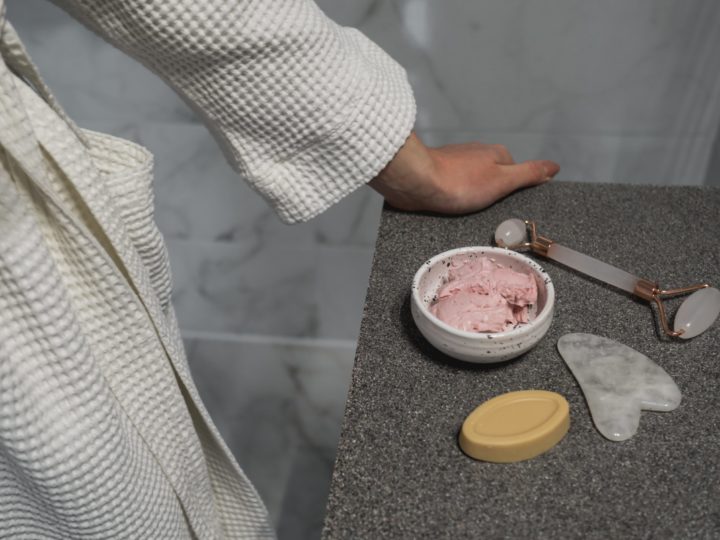MEDICINAL HERBS 101
6 Powerful Plants In TCM

Got a green thumb and want to plant your own herbal garden? Or just want to know more about the herbal supplements you’ve been taking? You’ve come to the right place!
Herbal teas, tinctures, lotions, and supplements have been used for thousands of years in Traditional Chinese Medicine (TCM). Both Eastern and Western medical practitioners have shown that herbal remedies can be widely beneficial to maintaining good health, easing uncomfortable symptoms, and completely curing others.
The general consensus is that there are over 300 different medicinal herbs commonly used in TCM. While we won’t be covering all 300 (this is just Medicinal Herbs 101, remember), this introduction to Chinese herbs can help you begin to understand how they work within the practice of TCM and combined with one another. It’s rare that medicinal herbs are taken alone, and many of the herbs listed below can actually be used together in many treatments.
Excited to put these herbs to practical use? Be sure to consult with your healthcare professional to make sure that an herbal mix is right for you prior to trying it. In Herbs 101, we’ll introduce you to six commonly used medicinal herbs; astragalus (huáng qí), cinnamon (guizhi), atractylodes (baizhu), ginger (jiang), white peony (bai shao), and red sage root (danshen).
Astragalus (Huáng Qí)

You’ll be able to recognize this classic Chinese medicinal herb by its bright green, small-to-medium sized leaves. It also sprouts seasonal yellowish-pink bell-shaped blooms, though it often looks like the photo to the left when purchased from your local herb store. In Chinese, Astragalus is known as Huáng Qí.
In TCM, Astragalus is one of the most popular herbs and is often prescribed to treat all kinds of conditions including; low energy, diarrhea, fatigue, anorexia, upper respiratory infections, kidney diseases, heart disease, as an immune booster, hepatitis, fibromyalgia, to reduce allergic reactions, and ease symptoms of cancer. We told you it was a lot! Even better, this herb is considered “food grade”, meaning it’s nontoxic when taken in normal doses. The way you’re instructed to take the herb will likely vary depending on your condition.
To use astragalus, you’ll want to focus your attention on the root- that’s the home of all the key benefits. It can be boiled to make soup, steeped into a tea, or taken as an extract or supplement. It’s commonly mixed with other herbs and ingredients such as ginseng, dong quai, and Chinese licorice to add extra health benefits!
Cinnamon (Guizhi)

Are you relieved to see one you recognize on this list? Cinnamon is a fairly common addition to Western spice cabinets and used to make sweet cinnamon desserts. But long before we were making cinnamon rolls, TCM used different forms of cinnamon as a way to revitalize circulation and unite the internal energy between the upper and lower parts of the body.
Cinnamon as we know it comes from large tree that tends to grow in the tropics. The most usable parts are the twigs and bark of the tree which can be brewed up into a spicy tea, or ground into a powder that can be taken in capsule pills. But not all cinnamon is created equally! In traditional Chinese medicine, the cinnamon twig (Guizhi) is used to spark balance in circulation in certain spots of the body, like your legs or your right arm. The cinnamon bark from the trunk and large branches (Rou gui) is best to help you warm up the entire body’s circulatory system and reset the balance. Culinary cinnamon in your kitchen cabinets tends to lie halfway between them in strength.
Atractylodes (Baizhu)

You might look twice at the plants and flowers on your next tropical vacation after getting acquainted with atractylodes! This lush medicinal herb is often referred to by its Chinese name, baizhu. You can spot it by its pink-ish, spiny center which is surrounded by lengthy green leaves.
When it comes to treating digestive issues like stomach aches, diarrhea, gas, bloating, and overall healthy stomach and intestines, atractylodes are a top choice to be added into medicinal tonics and tinctures. Practitioners of TCM would say that it’s a prime herb for treating may issues in the spleen and stomach meridians, which refer to the digestive organs. While it’s uncommon to see this herb taken alone, it can be prescribed as part of a treatment.
Ginger (Sheng jian or Gan jiang)

Surprise, ginger is good for more than just a topping on your sushi! While some may find this herb truly appetizing, underneath the powerful, spicy flavor lies key medicinal benefits that are used in many TCM herbal mixes. Ginger is said to have properties of both a cooling and warming herb. According to Traditional Chinese Medicine, fresh ginger cools you down by making you sweat and is very effective for fever reduction. The organs ginger is often said to be best suited for are the spleen, stomach, and lung. These meridians control functions such as digestion and processing of food, blood clotting, and key parts of the flow of qi, or energy.
But when something goes wrong in the balance of these meridians, unpleasant symptoms tend to appear. Some of the conditions ginger is used to treat include; upset stomachs, headaches, upper respiratory congestion, some heart concerns, coughs, and morning sickness in pregnant women. Dry ginger is energetically much more warming than fresh ginger. Ginger is often combined with other herbs to create a tea, soup, tonic, or capsule pill for the patient to take.
White Peony (Bai Shao)

Another flower, white peony or paonia alba, is more than meets the eye. The white peony is a popular East Asian medicinal herb that’s known for dispelling premenstrual blues. This herb is commonly referred to by its Chinese name, bai shao. This is another medicinal plant that preserves all the healing properties in its roots, so you’ll have to wait for the plant to fully mature before digging those babies up and putting them to good use.
The primary uses of the white peony root are to regulate the circulation and quality of blood. In TCM, blood can be considered hot, cold, sluggish, or quick (and all sorts of descriptors in between). But don’t get nervous, these descriptors are ways to describe the health of the overall being and noting some key highs and lows in the energy.
Taking white peony root as part of your herbal treatment is said to help relax blood vessels, nourish the blood, and increase circulation through your skin down to your littlest fingers and toes. It’s also been researched as an effective addition to treatment for inflammation. Most commonly, you can expect to take peony brewed into a tea or taken as a pill. You’ll also likely see it mixed with other herbs including dang gui, licorice, or ginseng.
Red Sage Root (Danshen)

If you’re thinking of the sage used to cleanse the energy in your home, think again. This herb isn’t for burning, rather it is praised by practitioners of TCM as a powerful healing tool used to treat those who have experienced physical trauma. While western herbalists and cooks use sage leaves, the Chinese dan shen is all about the roots.
Dan shen, or salvia miltiorrhizia, is commonly recommended by TCM practitioners for patients recovering from diseases or wounds that caused damage to key body tissue. This can include conditions such as intense and ongoing inflammation, stroke recovery, many traumatic injuries, infections, and degenerative diseases. In TCM, these conditions are linked to imbalances in the heart and liver meridians.
If you’re not suffering from a severe injury, red sage can also be beneficial for overall wellness, as it’s been said to help lower blood pressure and cholesterol and maintain a healthy liver. To reap all the benefits of red sage root, you can brew it into a tea or tincture or take it as a supplement pill. It is also safe to be combined with other herbs, which often vary greatly depending on the particular diagnosis.
While you now know the basics of six key herbs used in Traditional Chinese Medicine, keep in mind that you aren’t quite a professional herbalist yet. As mentioned previously, these herbs can have powerful effects on the body, so be sure to consult with a medical professional before adding medicinal herbs to your diet.
Comments (0)
Leave a reply
You must be logged in to post a comment.




